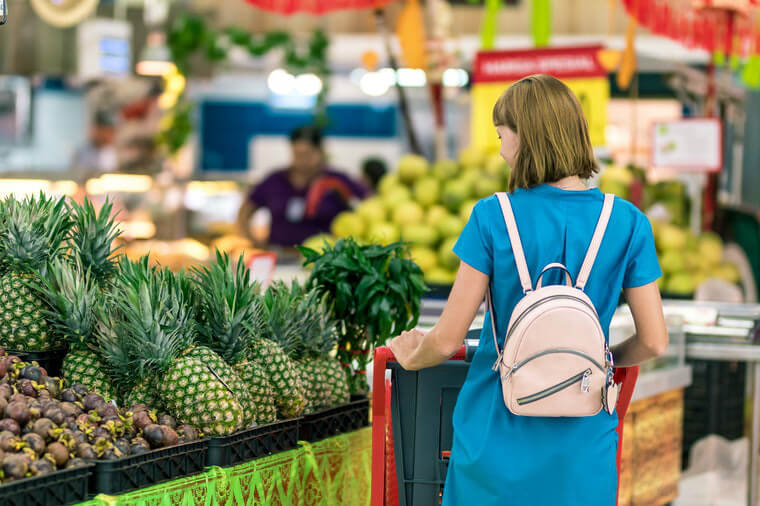By Dylan Bartlett
Helping the environment can seem like a daunting task. Many people want to live more sustainably, but they don’t know where to start. With the imminent threat of climate crisis, getting started may seem overwhelming.
However, there are easy, eco-friendly changes you may not have considered. Try utilizing some of the tips below. You’ll be surprised how easy it can be to save the environment.
1. Make a Grocery List
If you’ve ever gone into a grocery store on an empty stomach, you know how dangerous it can be. Not planning meals can cause us to buy more than we need, increasing the amount of food that goes to waste.
Take a second to inventory the items you already have in your pantry and refrigerator, and make a list of exactly what you need.
2. Buy Used Furniture
Antique furniture is having a renaissance. With most new decor mass-produced with cheaply sourced materials, people are rediscovering the value of buying used.
Purchasing pre-owned furniture doesn’t mean you have to compensate style for money. Most antique items are better crafted, sourced with sturdier materials and come in many unique styles.
3. Drink Loose Leaf Tea
It might not seem like tea bags create a lot of waste, but if you think about how many people consume tea, the amount of waste becomes pretty significant. Plus, experts say 20 to 30% of teabags are not made from biodegradable paper, meaning they clog up landfills. Drinking loose leaf tea not only reduces waste, but it often has more green certifications, such as being fair trade.

4. Get a Library Card
Nothing is better than reading a new book for the first time. Unfortunately, these tomes have a substantial carbon footprint, and many people buy ones they never actually crack open.
Supporting your local library allows you to read as much as you want without the environmental impact. Most library services will also have annual used book sales, so you can still build your personal library without killing trees.
5. Update Your Lighting
LED lightbulbs are becoming mainstream, now more cost-effective than incandescent bulbs, and much more energy-efficient. While we tend to focus on replacing fixtures in the living spaces we use most, outdoor lighting uses just as much energy.
From spotlights to lawn decoration, updating your outdoor decor can play a significant role in your home’s sustainability. Today, there are tons of creative LED alternatives to choose from.
6. Change Your Cosmetics
The cosmetic industry has a dirty secret. The FDA does not regulate most ingredients in makeup, lotion or perfume. Unfortunately, greenwashing is very common in the personal care sector, and many items that advertise being healthy and environmentally friendly are the complete opposite.
Do your research and support sustainable cosmetic companies that can save the environment and your health.
7. Eat Seasonally
Today, you can buy strawberries at any grocery store any time of the year. However, buying produce out of season can have a serious environmental impact. Conventionally-grown food travels an average of 1,494 miles to reach the market, creating a significant carbon footprint. Eating produce in season, however, can improve your nutrient intake and help save the environment.
8. Reuse Party Decorations
You don’t have to avoid buying wrapping paper or give up balloons to be eco-friendly. However, there are changes you can make when it comes to party decor to decrease the negative impact.
Get creative with the products you use. Newspapers can make beautiful wrapping paper, and natural garlands add the perfect touch to any dinner party. Before buying more paper products, check what you already have in stock.

9. Go to the Farmer’s Market
With the climate crisis, it’s time to remember where our food really comes from — farms. Buying directly from farmers is not only a great way to get better quality items, but it also reduces the energy involved in production.
Going to the farmer’s market is a great way to learn how to eat sustainably since you can talk with vendors.
10. Make Your Own Cleaners
It seems like there are always new cleaning products on the market, all making claims that they will change your life. Unfortunately, most items are extremely toxic and terrible for the environment.
Even if you are not into DIY projects, making your own household cleaners is a relatively straightforward process. Using ingredients like white vinegar, castile soap and peppermint oil can be useful in killing germs.
How to Make Easy Eco-Friendly Changes
You, as a consumer, have the most significant impact on the planet. What you buy and how much you consume has a massive influence on the environment. Living more sustainably by making small incremental changes is easy.
Make subtle tweaks to your daily habits to save both money and the environment.





 Em Português
Em Português En Español
En Español